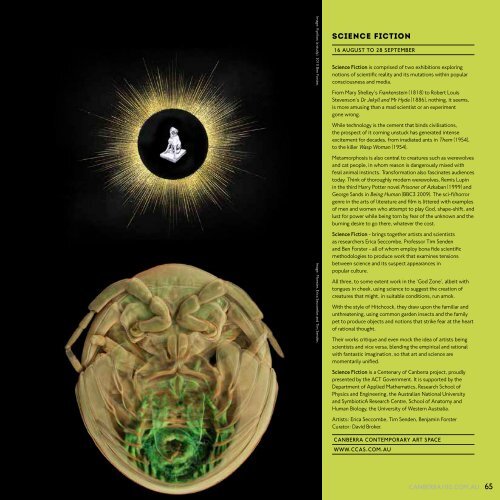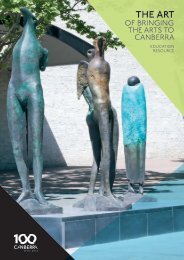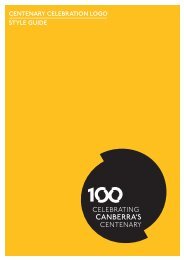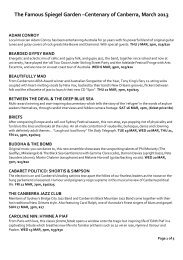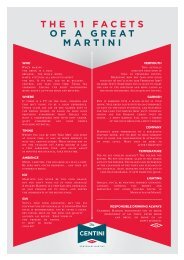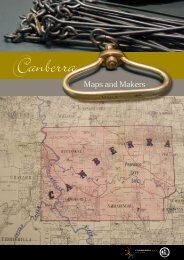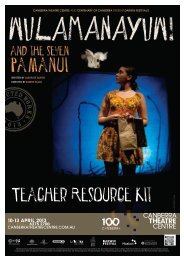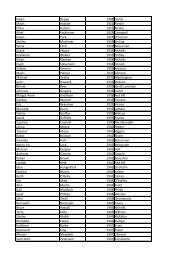WINTERâSPRING - Canberra 100
WINTERâSPRING - Canberra 100
WINTERâSPRING - Canberra 100
Create successful ePaper yourself
Turn your PDF publications into a flip-book with our unique Google optimized e-Paper software.
Image: Kynikos (a study), 2010 Ben Forster. Image: Monster, Erica Seccombe and Tim Senden.<br />
Science Fiction<br />
16 August to 28 September<br />
Science Fiction is comprised of two exhibitions exploring<br />
notions of scientific reality and its mutations within popular<br />
consciousness and media.<br />
From Mary Shelley’s Frankenstein (1818) to Robert Louis<br />
Stevenson’s Dr Jekyll and Mr Hyde (1886), nothing, it seems,<br />
is more amusing than a mad scientist or an experiment<br />
gone wrong.<br />
While technology is the cement that binds civilisations,<br />
the prospect of it coming unstuck has generated intense<br />
excitement for decades, from irradiated ants in Them (1954),<br />
to the killer Wasp Woman (1954).<br />
Metamorphosis is also central to creatures such as werewolves<br />
and cat people, in whom reason is dangerously mixed with<br />
feral animal instincts. Transformation also fascinates audiences<br />
today. Think of thoroughly modern werewolves, Remis Lupin<br />
in the third Harry Potter novel Prisoner of Azkaban (1999) and<br />
George Sands in Being Human (BBC3 2009). The sci-fi/horror<br />
genre in the arts of literature and film is littered with examples<br />
of men and women who attempt to play God, shape-shift, and<br />
lust for power while being torn by fear of the unknown and the<br />
burning desire to go there, whatever the cost.<br />
Science Fiction - brings together artists and scientists<br />
as researchers Erica Seccombe, Professor Tim Senden<br />
and Ben Forster - all of whom employ bona fide scientific<br />
methodologies to produce work that examines tensions<br />
between science and its suspect appearances in<br />
popular culture.<br />
All three, to some extent work in the ‘God Zone’, albeit with<br />
tongues in cheek, using science to suggest the creation of<br />
creatures that might, in suitable conditions, run amok.<br />
With the style of Hitchcock, they draw upon the familiar and<br />
unthreatening, using common garden insects and the family<br />
pet to produce objects and notions that strike fear at the heart<br />
of rational thought.<br />
Their works critique and even mock the idea of artists being<br />
scientists and vice versa, blending the empirical and rational<br />
with fantastic imagination, so that art and science are<br />
momentarily unified.<br />
Science Fiction is a Centenary of <strong>Canberra</strong> project, proudly<br />
presented by the ACT Government. It is supported by the<br />
Department of Applied Mathematics, Research School of<br />
Physics and Engineering, the Australian National University<br />
and SymbioticA Research Centre, School of Anatomy and<br />
Human Biology, the University of Western Australia.<br />
Artists: Erica Seccombe, Tim Senden, Benjamin Forster<br />
Curator: David Broker.<br />
<strong>Canberra</strong> Contemporary Art Space<br />
www.ccas.com.au<br />
canberra<strong>100</strong>.com.au 65


